
Being a native Muscovite, Konstantin Korovin nevertheless rarely depicted his native city landscapes, although, undoubtedly, he derived inspiration from this, so the painting “Moskvoretsky Bridge” can be called with certainty unique in the work of the painter.
The wide panorama at first sight surprises with its brightness and spontaneity. Before us is a recognizable landscape – lush domes of St. Basil’s Cathedral, strict Kremlin towers and closely-facing lodges, dotted with colorful roofs and smart signboards.
The amazing property of Korovin’s painting, to depict so realistically the surrounding world with the help of impressionistic technique, is shown in this painting to the extreme. There is no other Russian artist who knows how to “catch” the beauty of the moment so magnificently!
The composition of the picture is built with a great imagination – the painter completely freed the entire foreground, to enable the viewer to fully enjoy the opened panorama. Moving towards us, the red tram is like a connecting link between the free foreground of the foreground and the crowding of different elements in the background.
Today this picture is of interest not only as a work of fine art, but also as an artifact bearing historical value – many buildings have not survived historical upheavals and have sunk in the summer, and the picture of Korovin can give us an idea of how this part of Moscow looked in 1914. Here you can see the disappeared houses of the Vasilyevsky Descent, the lost white bell tower of the Temple of Nikolai the Wonderworker Moskvoretsky, which dates back to the time of the reign of Alexei Tishayshey. And the bridge is different now, and the one that Konstantin Korovin imprinted was replaced in 1938 by the modern Bolshoy Moskvoretsky, which still operates today.
Sunny, filled with light, the landscape of Korovin was a modest witness to the past days – and there are already no people or buildings, and the sun seems to shine with the same solemnity and festivity, and only the picture in the stretcher, written in a coarse-impressionistic style, conveys the mood of the era where he lived and created the greatest of the Russian impressionists, Konstantin Alekseevich Korovin.
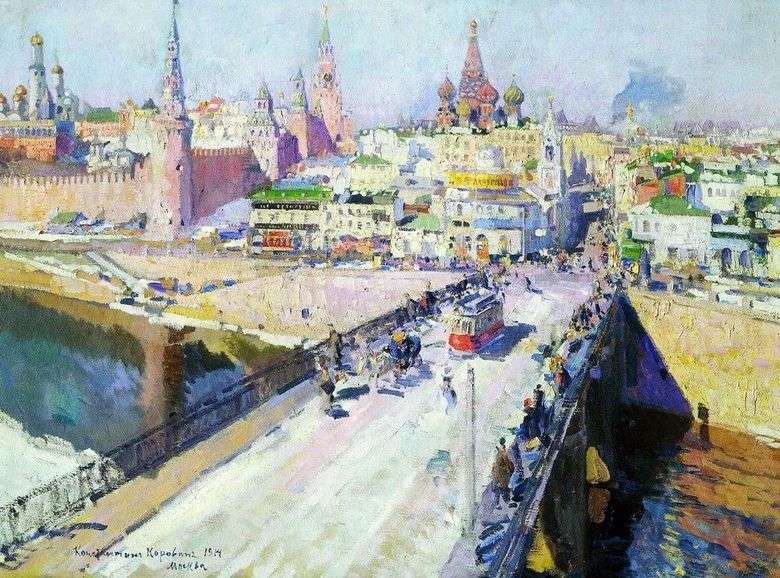 Puente Moskvoretsky – Konstantin Korovin
Puente Moskvoretsky – Konstantin Korovin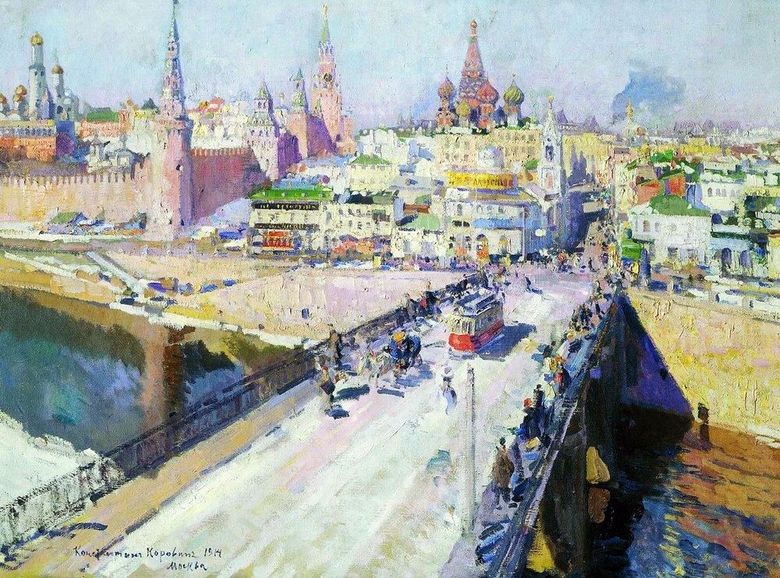 Pont Moskvoretsky – Konstantin Korovin
Pont Moskvoretsky – Konstantin Korovin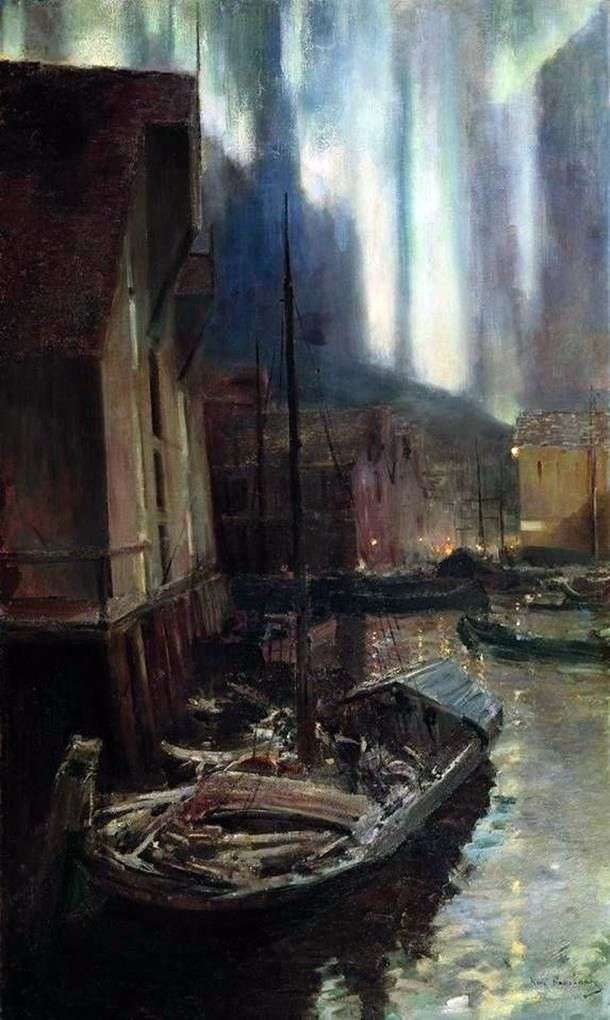 Hammerfest. The Northern Lights by Konstantin Korovin
Hammerfest. The Northern Lights by Konstantin Korovin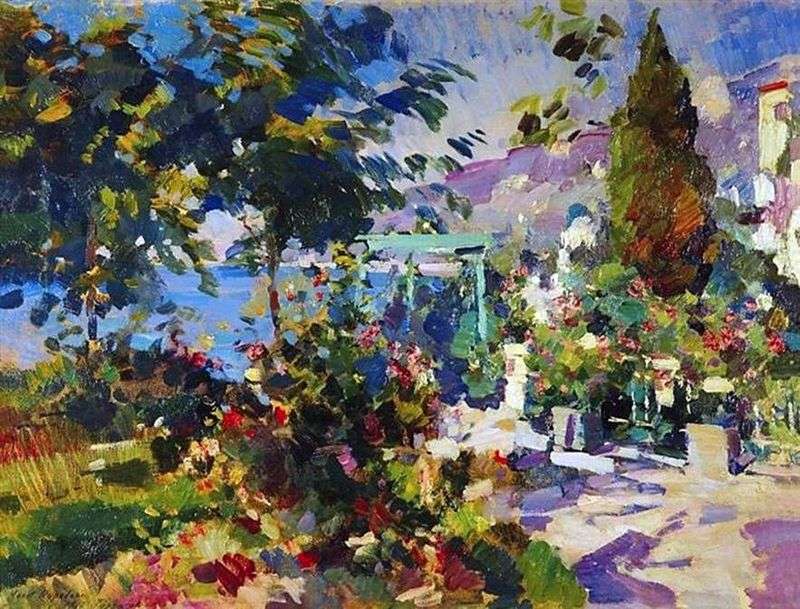 Crimea. Gurzuf by Konstantin Korovin
Crimea. Gurzuf by Konstantin Korovin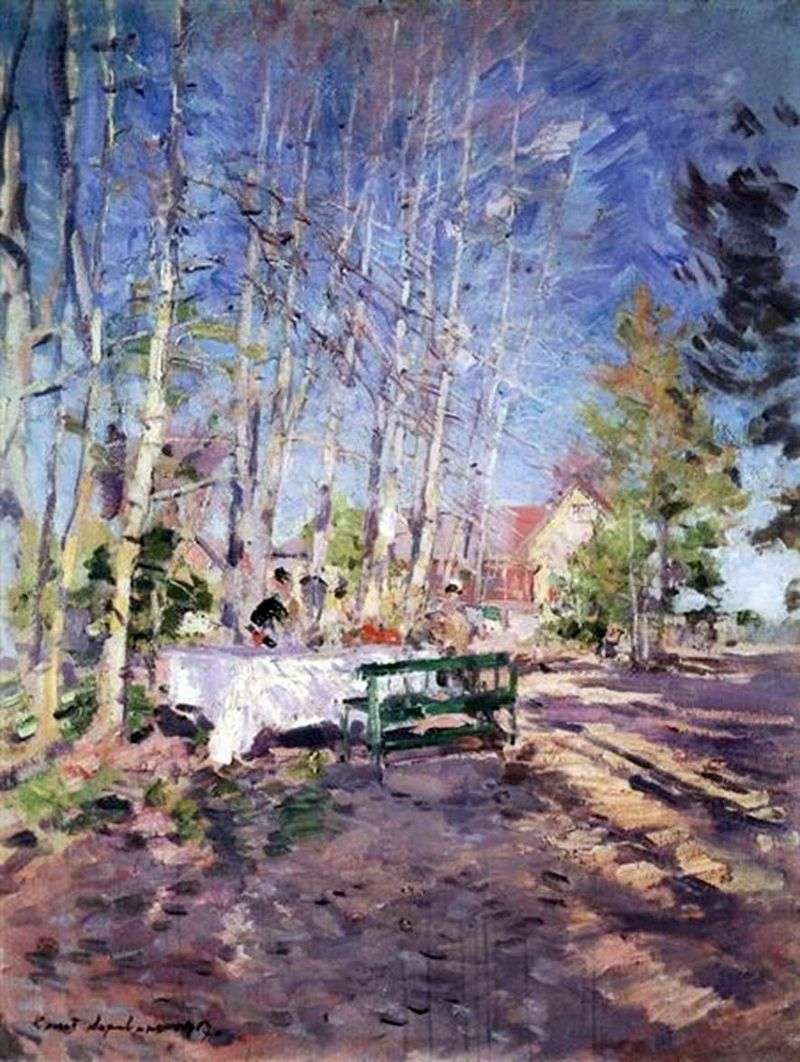 Spring by Konstantin Korovin
Spring by Konstantin Korovin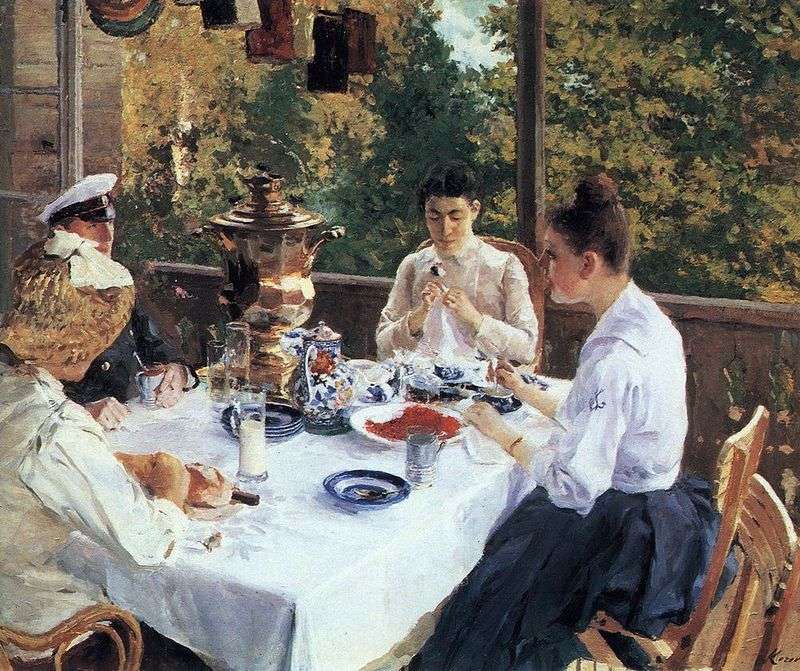 At the tea table by Konstantin Korovin
At the tea table by Konstantin Korovin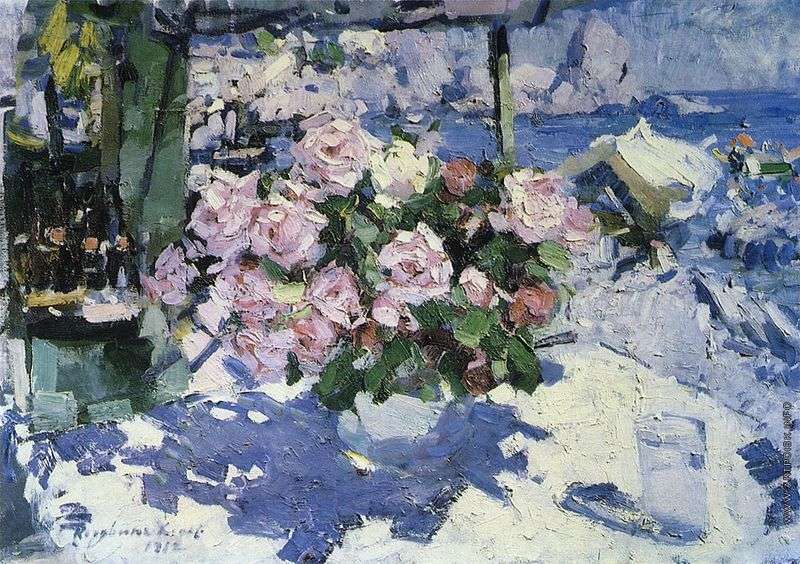 Roses by Konstantin Korovin
Roses by Konstantin Korovin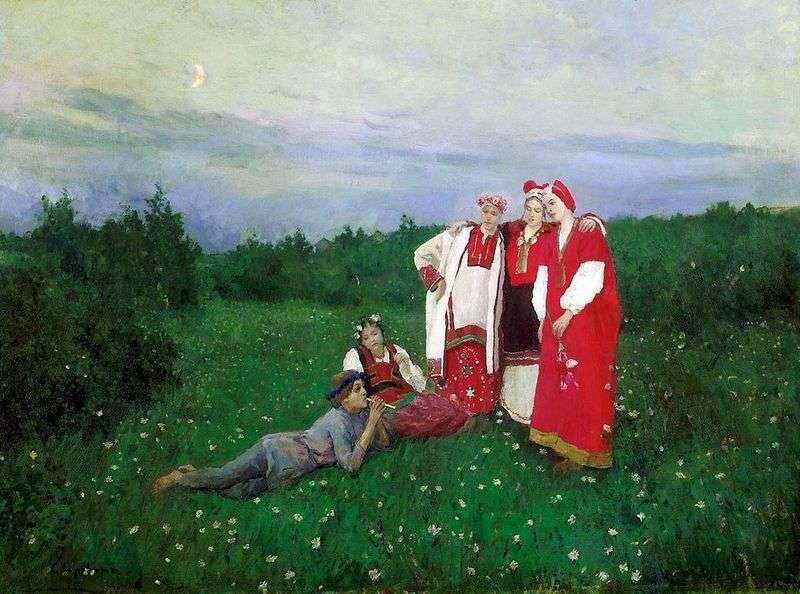 The Northern Idyll by Konstantin Korovin
The Northern Idyll by Konstantin Korovin